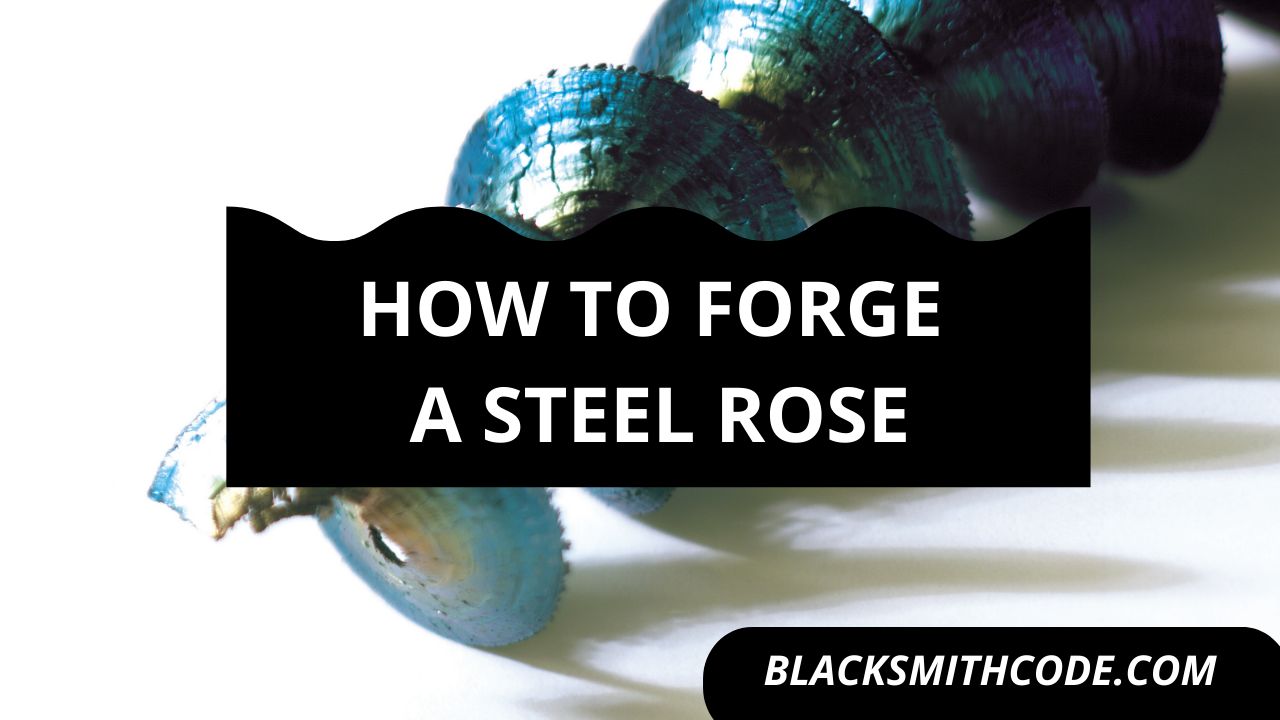Do you know blacksmiths can forge products as beautiful as roses? A steel rose is one of the most creative efforts of blacksmiths. Read on to find out how blacksmiths can forge a steel rose.
Roses are symbols of beauty and love in many societies. A steel or forged rose can serve almost the same purposes as the synthetic ones and even more. It can be of excellent economic value as well.
However, the forging process of a steel rose can be challenging, but the result is always worth it when you get it right. It can offer you a gift that can last a lifetime. Also, it will improve your overall blacksmithing skills.
Below are the necessary steps that can guide you through the forging process of your steel rose.
Essentials
The essentials in the forging process of steel rose to include;
Forge
Instructions on How to Forge a Steel Rose
Step 1: Get Your Materials
Getting the right material is an integral part of this process. You can make use of several scrap metals for most parts of the rose. But you need the selective size of metals for the forging of the petals of the rose.
You might have to make precise measurements for the petals depending on the size of rose you want to forge.

Step 2: Form the Stem
The stem of the rose is the extended part of the rose right below the petals. It is undoubtedly the most natural part of this process. This step is basically for shaping and texturing the stem; therefore, you don’t have to stress it.
Quick Steps
- Heat the scrap metal in a forge.
- Hammer the metal gradually until you have a tiny rod.
- Clean up one end and grind it. This end will serve as the terminal end of your rose. While the other tip is the part where the rose will be attached.
Step 3: Forming The Petals
Here comes the most challenging part of the entire task of forging a steel rose. The rose would contain different types of petals. Each of these petals differs from each other both in their look and the way they are formed.
Also, making these petals should follow a particular sequence. Before proceeding, it is essential first to recognize the sets of leaves in the mix. The collections of petals in the rose are;
- The first petal {to form a core where others would be attached}.
- Three inner petals.
- Two outer petals.
- The completing or final petal.
It is preferable to make these petals in that particular sequence.

Step 3A: Forming the First petal
This petal forms the core of the rose. It acts like a foundation where other metals are attached. If you get this petal right, there is a high possibility of getting the rest.
Detailed Steps
- Heat a flat piece of metal. The metal should be flat enough to form the desired shape. It should, however, be thick enough to build a solid base.
- Create a tooth shape by rounding out two edges of your metal while leaving the other two flat.
- Stand the rounded metal and hammer at an angle until you have the simulation of tooth shape.
- Once you reach this shape, draw out the metal without distorting the shape. You can achieve this by hammering the petal on an anvil until it becomes flat.
- Form the contours most conveniently for you. Forming the curl and contours is quite similar for all the petals.
- You can achieve this by hitting the petal on the inward corner with the use of a cross peen hammer on the metal around the edges of the hammer, a tip of the horn, and the horn itself.
- Carefully roll the petal without distorting your curls.
- Adjust any distorted spiral while turning. Attempting to adjust the curl after rolling might be slightly tricky.
- Once you have the desired roll, weld the end of the stem and get rid of the welding slag.

Step 3B: Form The Three Other Petals
These are three supporting petals. They are attached to the core petal. They follow the same process as the first.
The only difference between these three petals and the first one is that you won’t have to roll them into a complete circle.
Quick Steps
- Follow the steps in 3a above until it is time to roll.
- The petal contour and the rolling are dependent on the side of the base metal you intend to attach it to.
- You can keep forming your contours until you have a perfect fit.
- Once you achieve the overall shape, assign it the base metal and weld it up.
- As usual, clean up your welding slag.
- Move on to the next petal.
Do not make the mistake of welding the three petals all at once. You should be aware that the point of attachment will be different. Consequently, there will be variation in the contour formation and rolling

Step 3C: Include The First Two outside Petals
Here you would follow the same process for forging a steel rose while keeping the following points in mind:
- These petals are larger than the other ones. It should take the shape of a bowl just beneath the other petals.
- Don’t roll it like the first petals. The aim of these is to come out in bowl shape.
- Be careful not to distort the shape of the metal while attaching.
- Check if it fits the core petal before welding and clean up.

Step 3D: Form The Completing/Final Petal
You should be very careful with this step because it can alter the outlook of the rose if it is not done correctly.
Pro Tip
You should follow the steps in making the other petals while keeping the following in mind.
- It is the petal that will fine-tune the shape of your petal. Therefore, you should be careful about the process.
- It is smaller than the rest of the petals.
- You should invest time in ensuring that you have the perfect curl.
- Fix it in the right positions.
Once you are satisfied with the output, you can pat yourself on the back and move to the finishing steps.

Step 4: Guarding the Petals
You should make supporting structures for your petals. These structures will give your petals a compact look while also protecting it. You can be flexible in this step, just ensure that you are simulating a natural rose.
Step 5: Attach The Stem and Clean Up
weld your stem to the final output of your work and clean up all the welding slag.
Step 6: Finishing
The finishing step aims to give the rose a perfect outlook.
Quick Steps
- Heat the rose to a suitable temperature for the last time to ensure uniform texture.
- Let it cool off in an upright position in the vise.
- Choose your preferred coating for the rose.
- Clean up and include other touches you deem fit.
FAQs on How to Forge a Steel Rose
Question
How long does it take to forge a rose?
The forging process of a steel rose requires a tremendous amount of patience. However, the speed of the process depends on the level of expertise, creativity, and a bit of luck. On average, you can complete the forging of steel rose within the working hours of a day.
Question
Can I make a steel rose look like a real one?
Of course, you can make steel roses to simulate a natural or synthetic one. All you need is a series of creative paintings in a rose’s natural color.
Question
Do I need a forge for this process?
You would certainly need a forge for this process.
Video
Precautions
The precautions to take while making steel rose include;
- Ensure that you clean the welding slag after each welding process.
- Be careful while using a hammer on the small pieces of metal. Keep the same caution in mind while using your propane torch.
- Ensure you put on your protective gear while working in the blacksmithing workshop.





